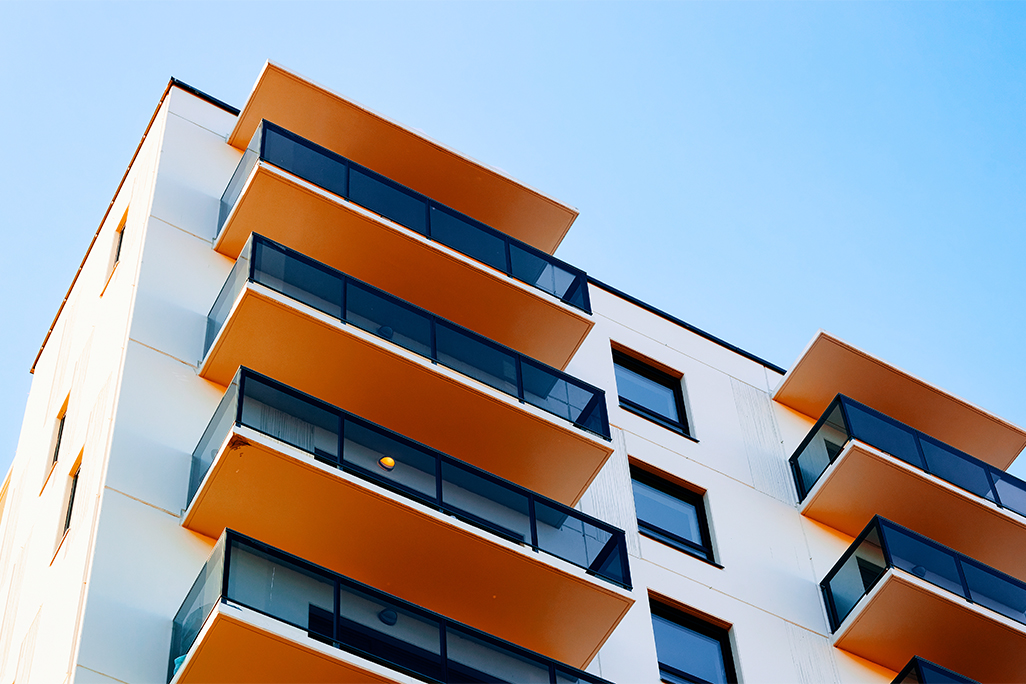UK Supreme Court rules in favour of apartment owners in nuisance dispute with Tate Modern
Published on 2nd February 2023
Majority decision draws distinction between 'overlooking' and 'visual intrusions' in private nuisance claims

In one of the hotly anticipated judgments of 2023 for UK real estate, the Supreme Court has ruled in favour of the residents of luxury flats at the Neo Bankside development, neighbouring the Tate Modern Gallery, who have successfully argued that the Gallery's 360-degree public viewing platform amounts to an interference with the ordinary use and enjoyment of their flats.
The case of Fearn and Others v Board of Trustees of the Tate Gallery concerned whether or not a breach of privacy caused by overlooking a residential block of flats can amount to a private nuisance. The constant "visual intrusion" that the residents suffered, combined with the rationale of the Tate's platform being an "abnormal and unexpected" use of its land, was enough to persuade the Supreme Court that they were victims of a private nuisance, overturning both the High Court and Court of Appeal judgments; in the words of Leggatt LJ, the residences had become "…much like being on display in a zoo…"
The volte face ruling may come as a surprise, given the decisions on this claim to date, but it does provide fresh insight as to what constitutes a private nuisance in the context of overlooking and in assessing whether the use of neighbouring land is common and ordinary.
Dispute background
The appellants, Fearn and others, were residents of four flats in the Neo Bankside development, which was built about 30 metres away from the Tate Modern. The development boasts floor-to-ceiling windows with views over the London skyline and River Thames.
Four years after the completion of the Neo Bankside development, the Tate Modern opened a 360-degree viewing platform, offering visitors unrestricted access to the London skylines. However, inadvertently, this also allowed visitors to look directly into certain flats within the Neo Bankside development.
The appellants soon noticed viewers waving and making gestures, taking photographs of the interiors – some of which appeared on social media – and using binoculars to peer into the flats. At the time of the trial in 2019, the viewing platform was open every day of the week and was visited by an estimated 500,00-600,000 people each year. The residents brought a claim and argued:
- Nuisance – the walkway interfered with their enjoyment of their flats, constituting a nuisance; and
- Breach of human rights – the walkway breached their right to privacy under Article 8 of the European Convention of Human Rights and Fundamental Freedoms.
They sought an injunction requiring the Tate Gallery to cordon off or screen that part of the viewing platform from which visitors could view in to the flats.
To appreciate the impact of the decision, it is important to understand how the findings of the lower courts influenced the Supreme Court's thinking.
First instance decision in favour of Tate Gallery
The High Court in the first instance held that the Tate Gallery could not be found liable for breach of privacy, rejecting the residents' argument that it was a public authority and so it was unlawful in statute for it to interfere with their right to privacy.
The court also held that the residents, in buying flats that contained floor-to-ceiling windows, had "submitted themselves to a sensitivity to privacy" so should not create a liability in nuisance. The judge considered that if the appellants were living in a flat with "a less glassed design", the invasion of privacy would be vastly reduced, finding as a result that the appellants had chosen to tolerate that specific design. Instead, the court suggested that the appellants could install net curtains, reflective film or lower their solar blinds.
Court of Appeal affirmed High Court
The Court of Appeal gave permission to the appellants to appeal only on the ground relating to the claim in private nuisance. It subsequently dismissed the appeal, but disagreed that the claim was about "undue sensitivity" contending it was instead about the impact the viewing gallery had on the amenity value of the flats.
The court held that:
- it is difficult to provide clear legal guidance as to what makes "overlooking" legal or not and therefore is difficult to apply an objective test for assessing impact on amenity value;
- it is relevant to look at other protections, such as planning laws and control; and
- judicial authority to date confirms that "mere overlooking is not capable of giving rise to a cause of action".
The panel decided that it was for Parliament to legislate further to deal specifically with overlooking if necessary, rather than extending the law of private nuisance.
Supreme Court overturns previous decisions
The Supreme Court allowed the appeal by a majority of three to two, overturning both the High Court and Court of Appeal judgments.
It held that the viewing platform did constitute a nuisance and acknowledged "how oppressive living in such circumstances would feel…much like being on display in a zoo". The Supreme Court firstly highlighted three errors made by the trial judge, being:
- Common and ordinary use – It should not have considered whether the Tate Gallery's viewing platform was an unreasonable use of its land, but whether it was a common and ordinary use of its land. The Supreme Court held that it was not, as "inviting members of the public to look out from a viewing gallery is manifestly a very particular and exceptional use of land" and not necessary to operating an art museum.
- Sensitivity in design and construction – The Supreme Court held that the fact the properties had been designed and constructed in a way which makes them particularly vulnerable to inward view cannot increase the liabilities of neighbours. This sensitivity could only be considered if the Tate Gallery had been making use of the land in a common and ordinary way. As it was held they were not, it was not a defence to say that the appellants would not have suffered nuisance if they were occupying a building with less glass.
- Responsibility on the victim – It disagreed with the suggestion that the appellants take measures to avoid being seen, such as putting up blinds or net curtains, as it places the onus on the victim to avoid the nuisance caused by the "abnormal" use of the neighbouring land.
Most importantly, the Supreme Court confirmed that the Court of Appeal had been wrong to consider this claim as one for overlooking, which it agreed would not be covered by private nuisance. Instead it held that this claim involved an extreme form of "intense visual intrusion" and "intolerable interference with their freedom to use and enjoy the property", the likes of which give rise to liability in nuisance and cannot be justified by the "rule of give and take".
It drew an important distinction between where property is capable of being seen from a neighbouring property, and where a neighbour is directly engaged in an act of looking at its neighbour (as actively encouraged by the platform).
As possible remedies were not raised in the appeal (or addressed by previous judges because of their conclusions on liability), the parties have been encouraged to reach agreement on the solution. Failing that they must return to the High Court for judgment on an appropriate remedy, namely damages or an injunction.
Osborne Clarke comment
This decision is the culmination of six years of intense legal dispute. It provides a helpful update into how the courts should now apply the principles behind a private nuisance, which will have a useful wider application.
Will this judgment lead to a floodgate of similar claims? Probably not. The specifics of the case are unique. The tests to get over the hurdles set out by the Supreme Court require facts at the extreme ends of the realms of ordinary, such as these.
More broadly, developers and residents in particular will welcome the comments that knowledge of a potential nuisance prior to the erection or acquisition of a building is not enough in isolation for a claim in nuisance to be defended. This affords stronger protections to those at risk of having the use and enjoyment of their land affected.
While the unusual circumstances at the Tate will not apply to many residential developments, the ruling gives a useful steer for the design of buildings. As it has been confirmed that private nuisance still does not extend to overlooking, developers may want to safeguard their projects, and to consider integrating privacy elements into any designs, particularly in built-up areas.




